2009-2013
Hudson Bay point blankets, burlap, wood
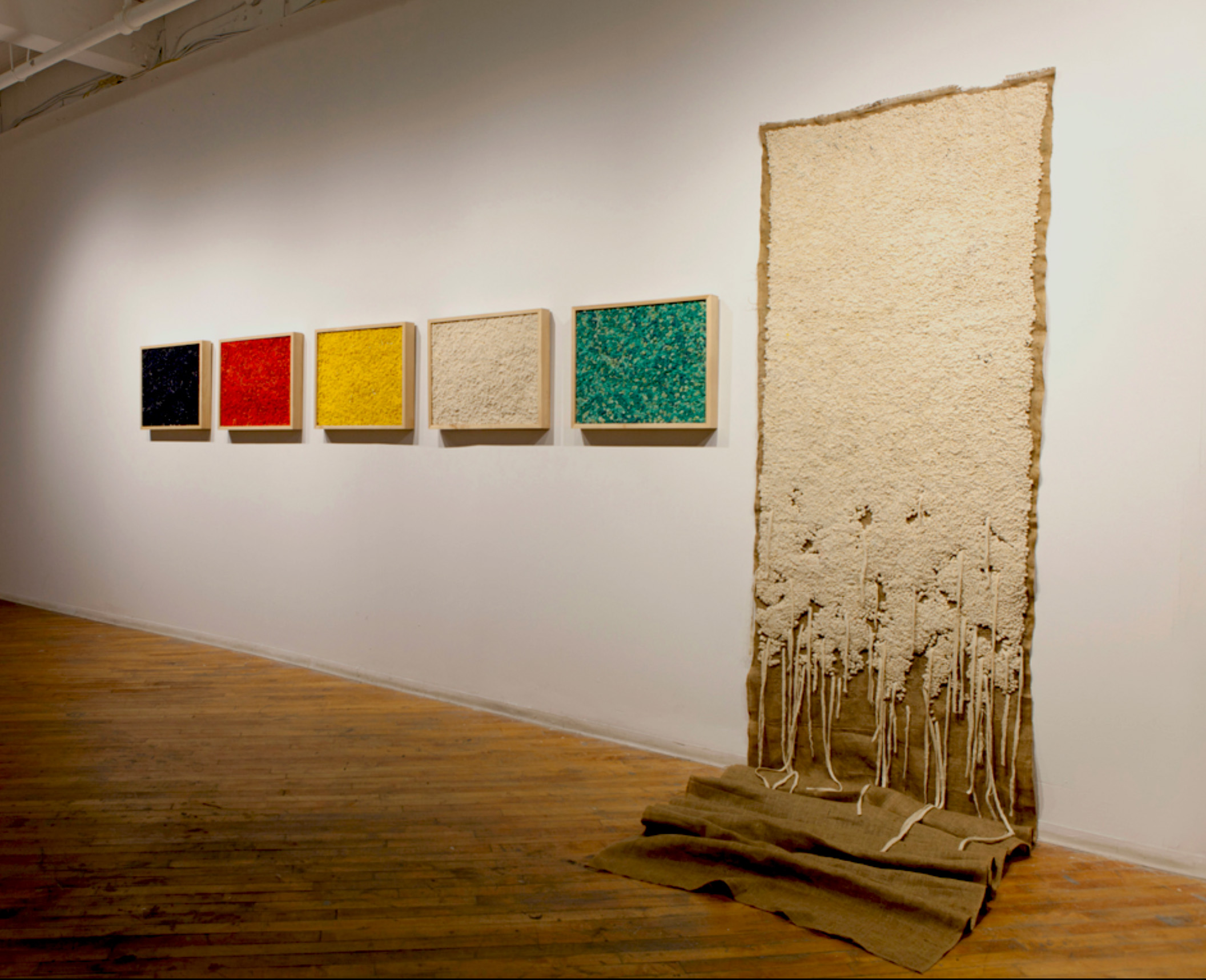
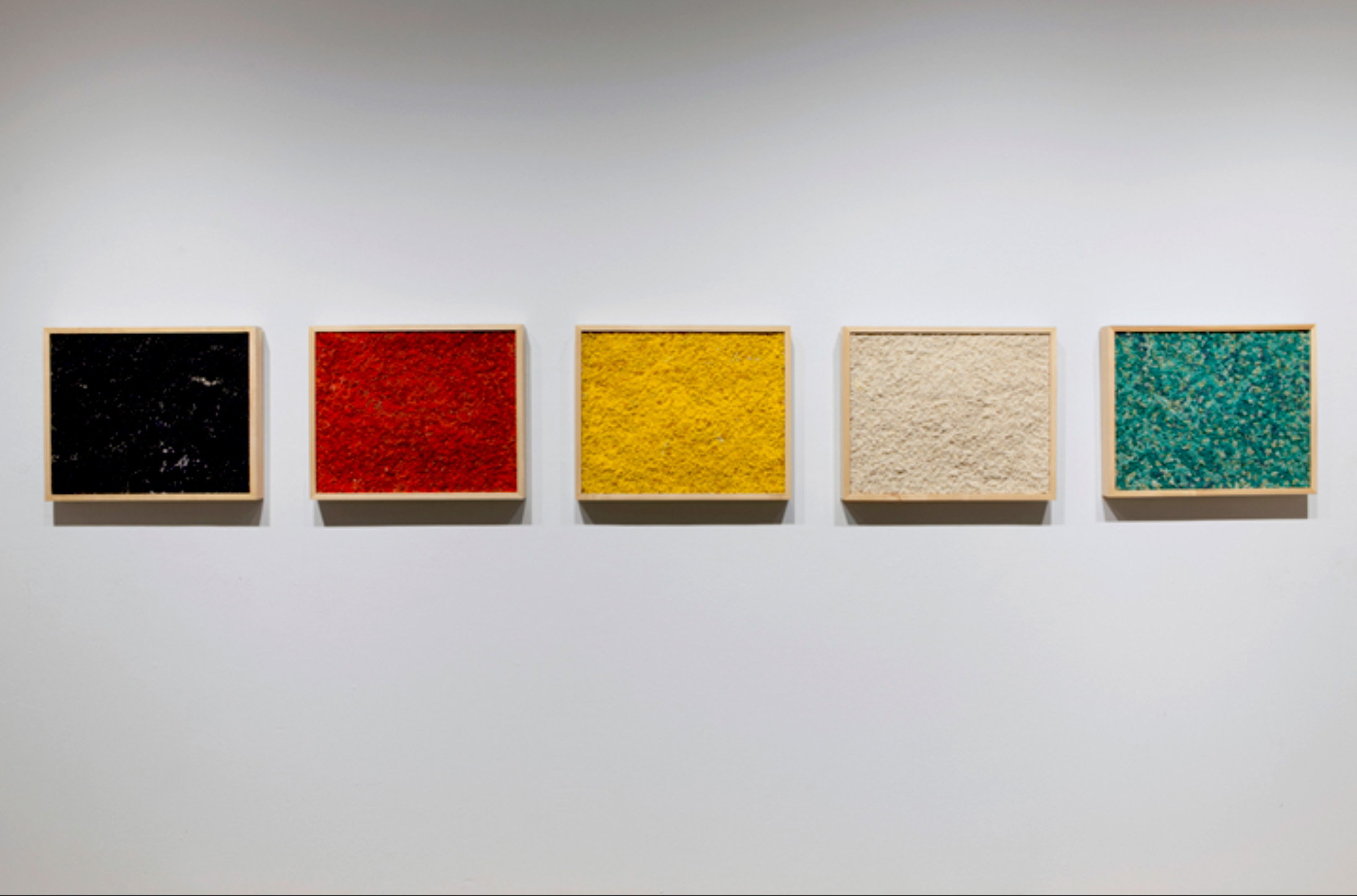
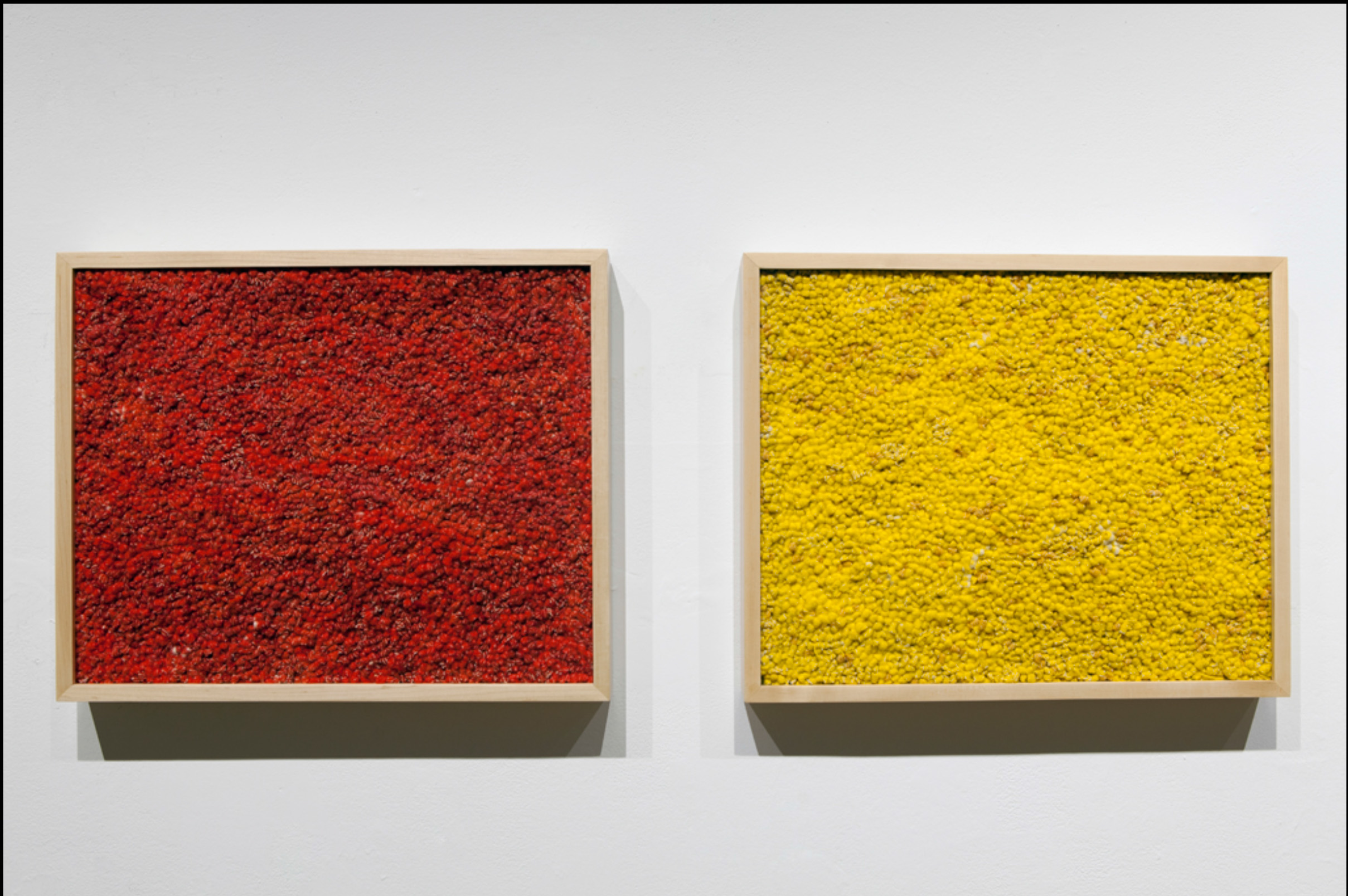
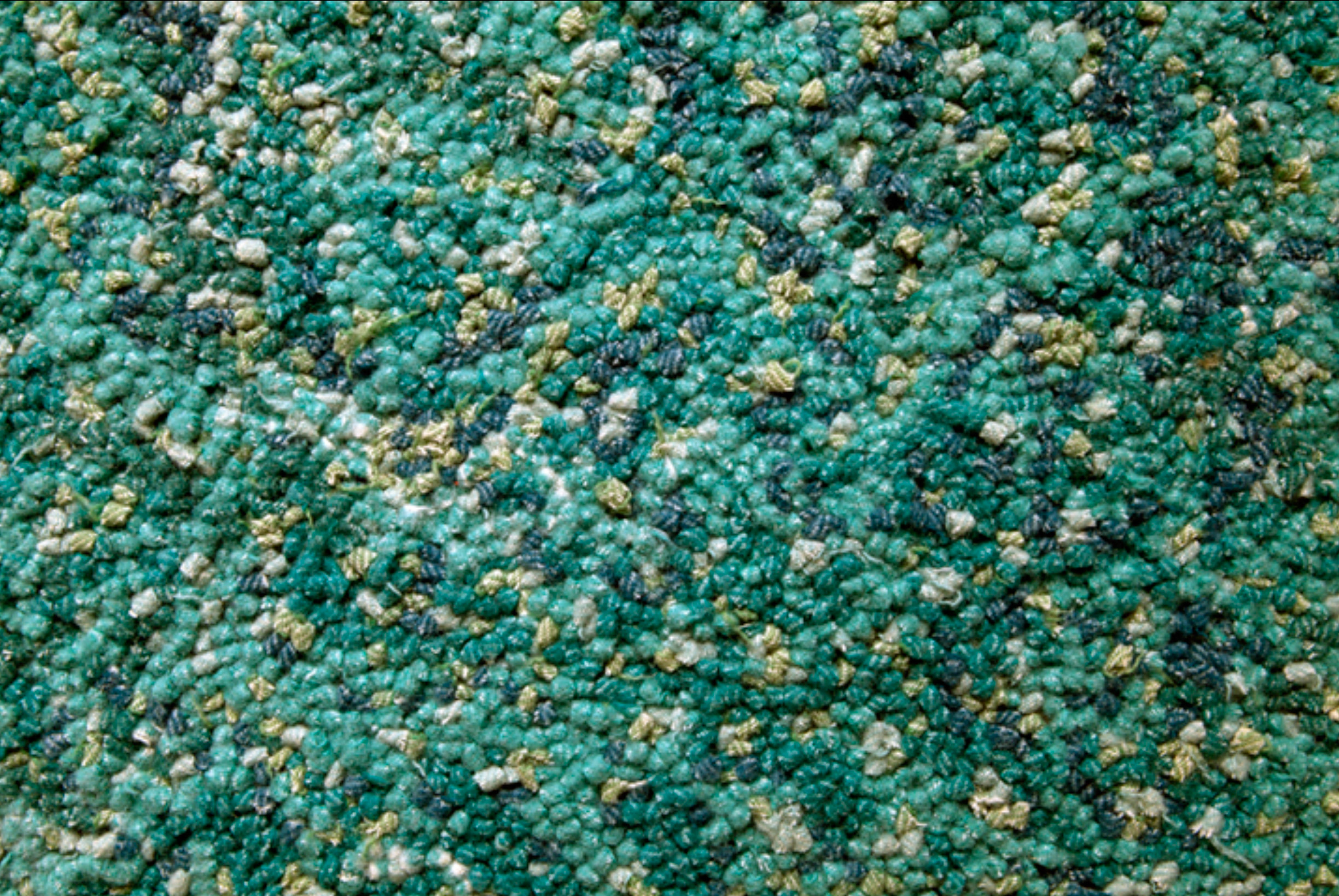

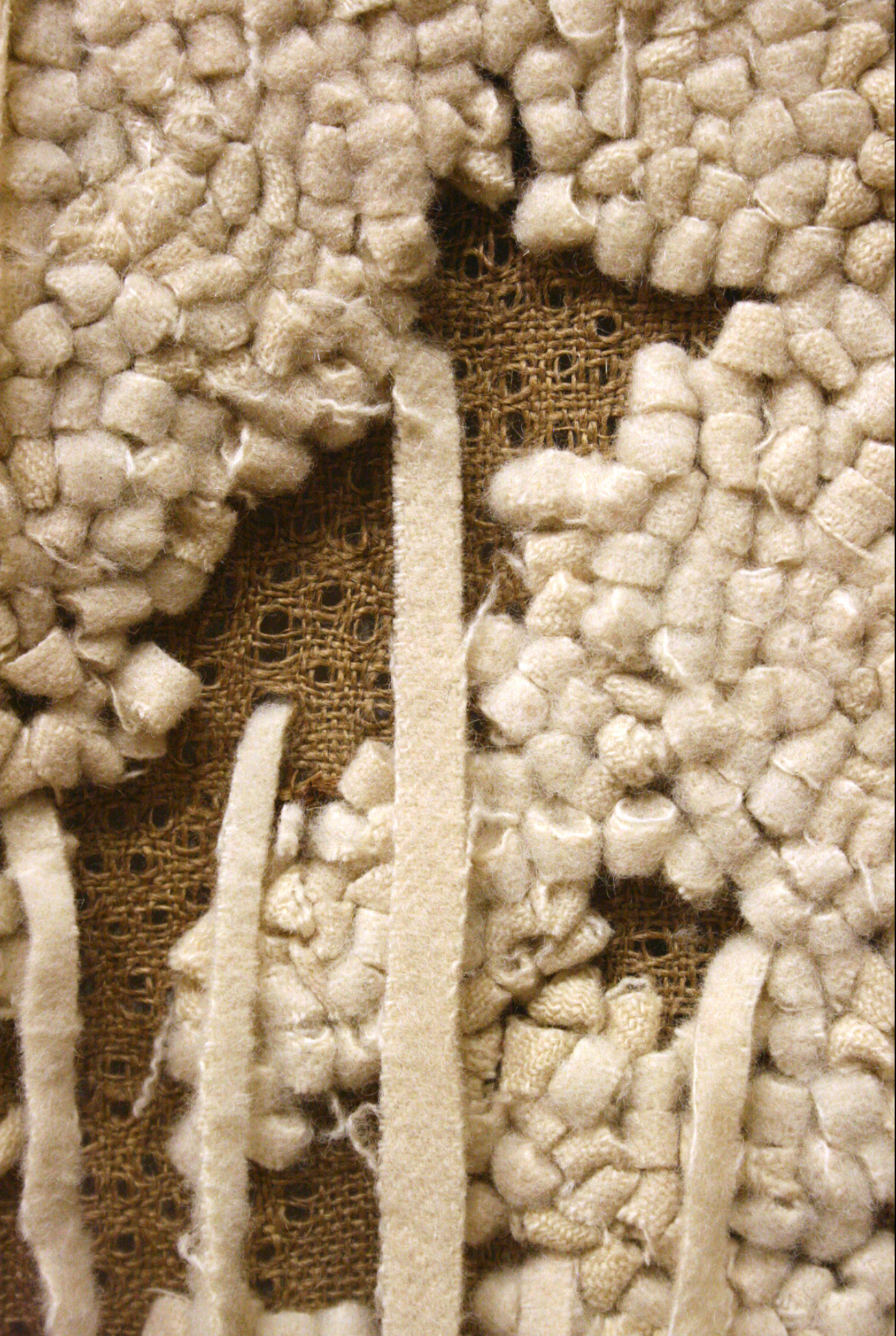
Five blanket suite is part of trade value, a series of works in which I enlist Hudson Bay Company (HBC) point blankets as a material and conceptual source to interrupt dominant national mythologies embedded in the Canadian consciousness. The HBC blanket is a powerful symbol of intersecting Indigenous and non-Indigenous/settler histories and narratives in the lands now known as Canada. As the de-facto original colonial currency, HBC blankets were initially circulated by and for the benefit of settler colonial interests. They came to be a cultural feature in many Indigenous communities, yet they are also understood as having been used to spread disease among Indigenous peoples. The multi-stripe version used in trade valueis is particularly visible in contemporary consumer culture. Now recognized as a luxury item, a national icon, and the brand image of the Hudson Bay Company, the blankets’ troubling history is largely expunged, and in this way they are reflective of a sanitized view of Canadian national identity. It is this tangled genealogy that I am interested in invoking and disturbing in the trade value works through material, relational, and digital manipulation of the HBC blankets themselves.
In five blanket suite I use HBC blankets in conjunction with references to the Group of Seven’s iconic and formative landscape paintings to problematize persistent mythologies that conflate colonial conceptions of wilderness and nature with Canadian identity and settler emplacement. Landscape can be understood as a politically, socially and culturally mediated representation that is integral to the production of national allegiances and identities. Simon Schama suggests, “National identity… would lose much of its ferocious enchantment without the mystique of a particular landscape tradition; its topography mapped, elaborated and enriched as a homeland.”[1] In their time, the Group of Seven’s landscape representations played a significant role in formulating and naturalizing colonially expedient perceptions of national identity in relation to nature. Enduring with remarkable tenacity, the Group’s presence and influence and these characterizations of Canadian-ness are firmly embedded in the contemporary Canadian psyche as a “quasi-official image of Canadian national identity.”[2] In this way the Group of Seven’s vision continues to support the divisive settler colonial logics on which this country is premised.
Five blanket suite is an installation comprised of six individual pieces made from deconstructed Hudson Bay point blankets which are reconstructed using a simple rug-hooking technique. As a hand process that links “the social, the political and the personal,”[3] the domestic bearing of rug hooking foregrounds the labour of material existence and suggests the everydayness of colonial perpetuation. Five of the pieces in the installation are stretched and hung like canvases, each a solid colour derived from the yellow, green, red and indigo bars and background white of the multi stripe HBC blanket. Each one represents a hyper-abstracted “Canadian” landscape image and is titled after a corresponding Group of Seven painting; Autumn Hillside, Jack Pine, Red Maple, A Northern Night and Icebergs. These pieces speak to the way the Group’s paintings erroneously characterized the land/scapes they chose to depict - and by extension the country’s wilderness as a whole - as pure, unexplored, unspoiled and, above all, unpeopled, with only their presence implied. The title of the sixth piece, the north’s living whiteness, is drawn from Group of Seven member Lawren Harris’s published writing which dovetails with the Group’s painterly visions of nation. John O’Brian notes that when Harris wrote about “the great north and its living whiteness,”[4] he was not only referring to snowy winter scenes but was also projecting a picture of nation through the racial primacy of whiteness.[5] Constructed from the white background of the blankets left over after creating the equally sized framed pieces, the north’s living whiteness is larger in scale and adhered directly to the wall. It is both unfinished and unbound, cascading into a pile on the floor with its burlap understructure clearly visible. Revealing the labour of its production in this way, the north’s living whiteness holds a tension between a sense of perpetual construction and deliberate unraveling, and thus refuses tidy resolution.
Drawing together the HBC blankets and references to the Group of Seven, five blanket suiteis a counter narrative to lingering conceptions of Canada and Canadian-ness that are shaped by the possessive desires of the colonial gaze.
[1] Schama, Simon. Landscape and Memory. New York: A. A. Knopf, 1995
[2] John O’Brian and Peter White, eds. Beyond Wilderness: The Group of Seven, Canadian Identity, and Contemporary Art(Kingston, ON: McGill-Queen’s University Press, 2007), 13.
[3] Ingrid Bachmann and Ruth Scheuing, eds. Material Matters: The Art and Culture of Contemporary Textiles (Toronto: YYZ Books, 2002), 17.
[4] Lawren Harris, “Revelation of Art on Canada,” Canadian Theosophist, July 15, 1926, 85.
[5] Scott Watson, “Race, Wilderness, Territory and the Origins of Modern Canadian Landscape Painting.” in Beyond Wilderness, O’Brian and White.
︎ ︎